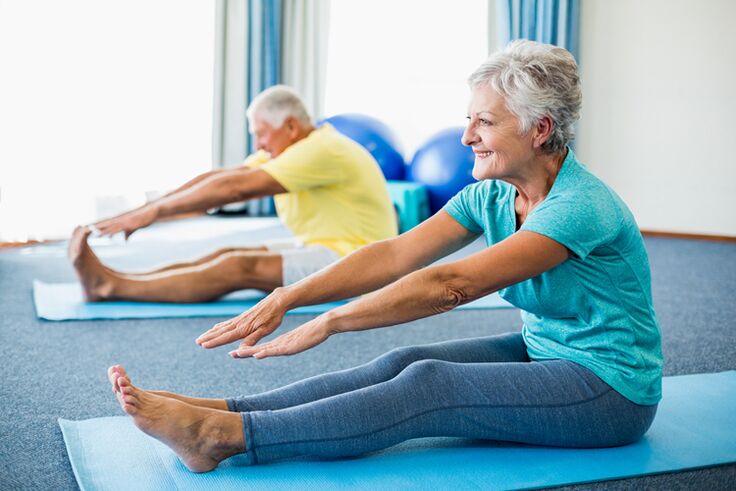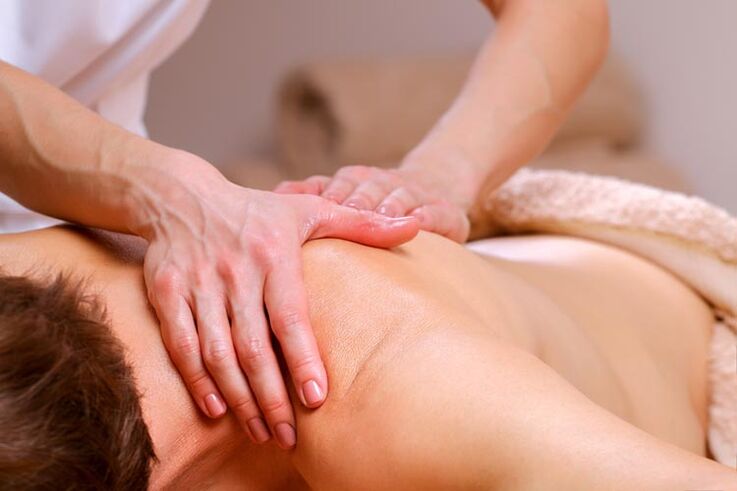
Osteochondrosis is one of the most widespread diseases in the world.Most people after the age of 35 suffer from osteochondrosis of the cervical spine in one form or another.Recently, there has been a tendency to increase the number of people suffering from severe forms of the disease and to rejuvenate the disease, lowering its lower age threshold.This is due to the fact that an increasing number of people around the world are engaged in sedentary jobs and lead a sedentary lifestyle.Meanwhile, the disease is quite dangerous, and anyone should know what it is: osteochondrosis, how it manifests itself and how it is treated, be able to recognize its symptoms and start treatment in a timely manner.
Causes of cervical osteochondrosis
Osteochondrosis is one of the few diseases characteristic only of humans.This disease does not occur in other animals.The reason for this is such a distinctive human feature as walking upright.The vertical position of the spine leads to the fact that the vertebrae press on each other, and the osteochondral tissue of the spine gradually degrades and is deformed.
The human spine begins from the cervical region.There are a total of seven vertebrae in this section, from the first to the seventh.The vertebrae are separated from each other by intervertebral discs. The cervical spine is a particularly vulnerable part, associated, first of all, with the increased mobility of the vertebrae in this area.In the cervical region the disease is mainly reflected in the discs, which represent a weak point in the structure of the spine.
The prevalence of cervical osteochondrosis is also facilitated by factors such as the small size of the vertebrae and the relative weakness of the neck muscles.In addition, the development of cervical osteochondrosis is strongly influenced by insufficient blood supply to the cartilaginous tissue.
Therefore, the development of the disease is a complex and long process and does not have a single cause.Although a connection has been established between a person's sedentary work and the presence of cervical osteochondrosis, however, the disease often occurs in trained people, especially athletes, due to the increased load on the cervical spine during weight lifting.
In older people, as a rule, the degradation of vertebral structures is an inevitable process associated with the aging of the body and the weakening of its defenses.However, the most common pathological type of cervical osteochondrosis occurs, in which external or internal negative factors play an important role.
Factors contributing to the development of osteochondrosis of the neck:
- Bad posture
- Curvature of the spine
- Back injuries
- Overweight
- Hard physical work
- Sedentary work
- Sedentary lifestyle
- Metabolic disorders
- Frequent hypothermia
- Uncomfortable position during sleep
- Stress, overwork
- Hereditary factors
- Infectious diseases
- The individual body structure is characterized, for example, by a neck that is too long or too short
Degree of development of cervical osteochondrosis
The disease has four stages.It is not always easy to determine the stage of the disease by analyzing the symptoms, since sometimes the degree of degradation of the osteochondral tissue may not correspond to the symptoms observed in the patient.

First degree
Destructive processes begin in the osteochondral tissue of the vertebrae.As a rule, at this stage of cervical osteochondrosis, symptoms are mild.Patients either do not notice them at all or do not associate them with spinal diseases, but attribute them to stress and overwork.
Second degree
The height of the disk begins to decrease and cracks appear on its surface.Symptoms of cervical osteochondrosis at this stage are manifested by constant pain, weakness and numbness in some areas of the face.
Third degree
Herniated discs form, cervical vessels and muscles are damaged.The patient feels dizziness and pain in the back of the head.
Fourth degree
Osteophytes appear: growths of bone tissue that protect the vertebrae from stress, which leads to compression of the nerves.This leads to stiffness of movements and damage to nearby joints.
Cervical osteochondrosis: symptoms
The main symptoms of osteochondrosis of the cervical spine:
- Neck and shoulder pain
- Muscle weakness
- Increased sweating
- Numb hands
- Loss of coordination
- Dizziness
- Deterioration of vision and hearing
- Increased blood pressure
- Heachache
These symptoms, typical of osteochondrosis of the cervical spine, can be present in all stages of the disease.In most cases, only some symptoms from the list are observed, and the rest may be absent.A person who encounters such signs of the disease for the first time does not always suspect that he has cervical osteochondrosis.Therefore, he can contact various doctors: therapists, cardiologists, neurologists, surgeons.As a result, the correct diagnosis can be made with a significant delay.

Syndromes
With cervical osteochondrosis, several syndromes occur, that is, typical conditions that have a complex of characteristic signs.They manifest themselves depending on which nerves and arteries are affected due to the disease:
- vertebral artery syndrome
- cardiac syndrome
- hypertensive syndrome
- radicular syndrome
- cervical migraine syndrome
Vertebral artery syndrome is one of the most unpleasant and dangerous complications of cervical osteochondrosis.It is caused by decreased blood flow through the artery that runs along the spine and supplies the brain.The syndrome manifests itself with symptoms such as systemic or periodic dizziness, impaired hearing and vision.In some cases, fainting may occur.A variant of the syndrome is often observed, in which under normal conditions the blood flow in the artery is normal, but when the head is turned in one direction or another, it can sharply decrease.
Cardiac syndrome develops when the nerve roots that supply the diaphragm or pectoral muscle are compressed.As a result, the patient may experience pain reminiscent of cardialgia, although there is no direct effect on the heart.However, the syndrome can be characterized by phenomena such as tachycardia, hypotension and arrhythmia.
Hypertension syndrome is also one of the most dangerous complications.Unlike vertebral artery syndrome, it is caused by compression of the veins rather than the arteries, which prevents the flow of blood from the head.The syndrome leads to an increase in intracranial pressure, which can manifest itself with symptoms such as nausea, vomiting and headache.
Cervical migraine syndrome has little in common in its etiology with classic migraine.It manifests itself with a strong pain in the back of the head.The pain is paroxysmal, lasts up to ten hours and is accompanied by vomiting.
Radicular syndrome is the most common syndrome in osteochondrosis of the cervical spine.Caused by compression of individual nerve roots in the cervical vertebrae.It can express itself with pain in the neck, nape, shoulder blades, shoulders, numbness and weakening of the tone of some areas of the arms (up to the inability to perform any manipulations) and the neck.
Very often, several syndromes or individual symptoms characteristic of different syndromes can be observed simultaneously.
As you can see, with osteochondrosis of the cervical spine, the manifestations of the disease are multiple, and the patient is not always able to correctly recognize the cause of their occurrence.If you experience similar symptoms, this is a reason to consult a doctor.
Diagnostics

To establish a diagnosis, it is recommended to consult a therapist.He will give a referral to specialists: an orthopedist, a vertebrologist, a neurologist.
The following types of studies are used for diagnosis:
- X-ray
- Computed tomography
- Magnetic tomography
- Ultrasound scan of the neck vessels
X-ray allows you to determine the displacement of the vertebrae, the presence of growths - osteophytes and salt deposits and compaction of the discs.Computed tomography involves the creation of a series of x-rays that provide a three-dimensional view of an organ, in this case the cervical spine.It allows you to detail the degree of the pathological process: the nature of nerve compression, the structure of osteophytes, the height of the discs, etc.MRI, based on the physical effect of nuclear magnetic resonance, provides an even more detailed structural image of the spine.Ultrasound of the neck vessels helps identify changes in blood flow in the large vessels of the neck caused by the disease.
Treatment of cervical osteochondrosis at home
How to treat osteochondrosis of the cervical spine at home and is it treatable?To combat the disease, medicine has developed many methods.Some treatments can be used at home.But this process is long and complete recovery is unlikely, especially in old age.However, it is possible to slow down and stop the destructive processes in the spine at any stage of the disease.
In the initial stages of the disease, methods are usually conservative.Several methods are used to treat cervical osteochondrosis:
- Medicines
- Therapeutic exercise
- Physiotherapy
- Massage
- Special means for fixing the spine
If the disease has progressed to the last stage and severe destruction of the osteochondral structure of the spine occurs, surgery can be used to treat osteochondrosis of the cervical spine.
Drugs
The following types of drugs are used:
- Chondroprotectors
- Vitamins
- Analgesics
- Anti-inflammatory drugs
- Antispasmodics
In case of acute pain syndrome associated with osteochondrosis, the first priority is its elimination.Oral medications are usually used, but if they are ineffective, an anesthetic block is used in severe cases.
For muscle spasms, antispasmodics are used.Muscle relaxants demonstrate maximum effectiveness in osteochondrosis.Ointments containing non-steroidal drugs can be used as anti-inflammatory and pain relievers.
In the presence of syndromes associated with circulatory disorders and blood supply to the brain - hypertensive and vertebral artery syndrome, drugs that alleviate the undesirable effects of these syndromes are taken - agents that lower blood pressure and nootropic drugs.
Therapeutic exercise
Physical therapy is the simplest and most accessible type of treatment for cervical osteochondrosis, and at the same time, quite effective.Physical therapy can also be done at home.With osteochondrosis, the intensity of exercise does not play a decisive role;only regularity is necessary.First of all, physical education is aimed at strengthening the neck muscles, which compensate for the insufficient functionality of the spine and help it support the weakened vertebrae.

Daily exercises are recommended to strengthen the neck muscles.They can be very simple, consisting of turning and tilting the head in different directions, or more complex, involving assisting the neck muscles with the hands.They can be done both at home and at work.For example, if your work is sedentary, it is useful to perform such exercises after an hour spent sitting at a desk or monitor.However, they can only be performed outside the period of exacerbation of the disease and in the absence of pain.Otherwise, they can only worsen the condition.
No less effective is strengthening the muscles of the shoulder girdle, for example through regular exercise with light dumbbells.However, lifting heavy objects (weights, barbells) is contraindicated.Regular swimming is also useful, as it relieves stress on the spine.
Physiotherapy
Physiotherapy is a treatment method that uses certain physical fields and radiation to affect the body.A positive property of physiotherapy is that it has a minimum number of contraindications.
The following physiotherapeutic methods are used to treat osteochondrosis:
- Ultrasound exposure
- Laser therapy
- Impact of the magnetic field
- Exposure to electric current (electrophoresis)
The magnetic field has a positive effect on damaged tissues in the body and has an anti-inflammatory and analgesic effect.Ultrasound improves metabolic processes in tissues and relieves swelling.The same can be said about laser therapy.Electrophoresis is often used in conjunction with medications, as the use of electric current accelerates their absorption by the body.
Massage

Massage reduces increased muscle tone, which causes spasms, and reduces lymph flow, which causes swelling.The procedure helps to improve blood circulation in the affected area, stopping the process of destruction of the intervertebral discs.
Other treatments
What to do with cervical osteochondrosis if classic methods of home treatment do not help?To reduce the load on the cervical spine, a special device is used - a Shants collar, which fixes the neck in a constant normal position.It is recommended to wear it during exacerbations of pain or during prolonged sedentary work.
To avoid flare-ups, you should also arrange a place to sleep.The pillow should not cause neck curvature and the mattress should be firm and even.In some cases, special sleep aids, such as an orthopedic mattress and pillow, can help.

















